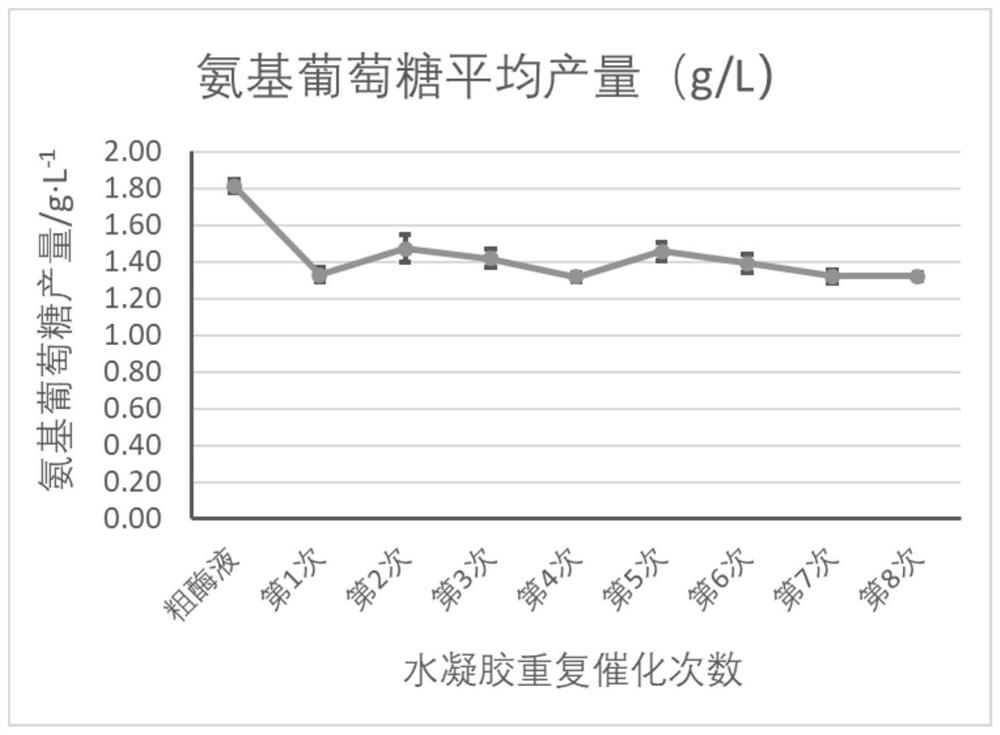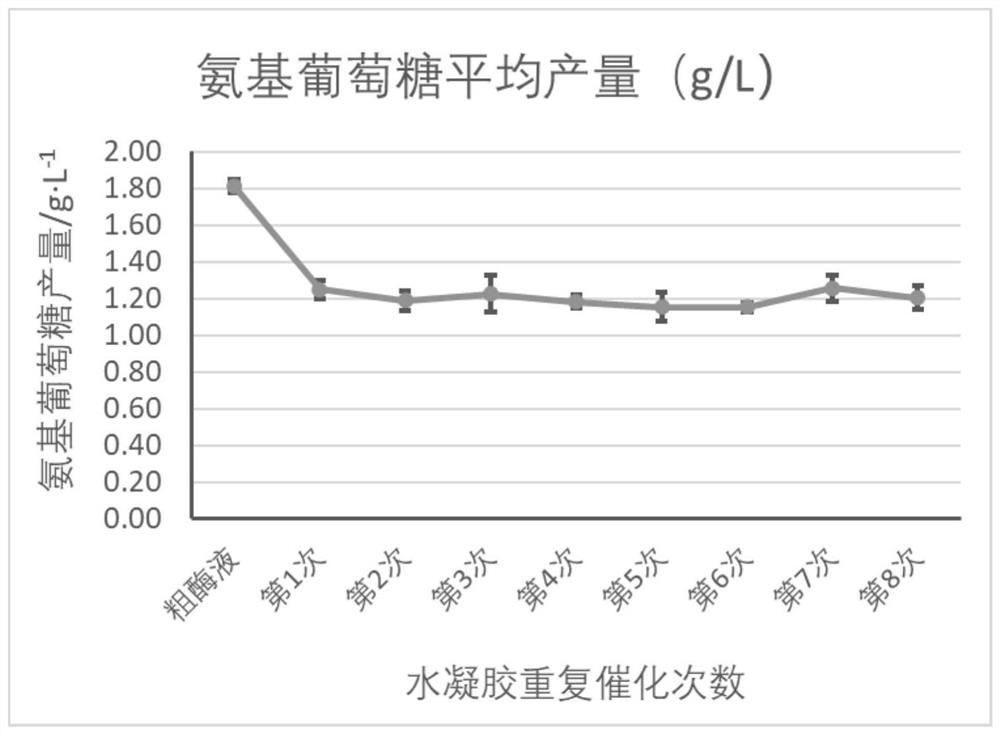Gelatin hydrogel-based method for immobilizing diacetylchitobiose deacetylase
A technology of deacetylase and hexanebiose, which is applied in the field of immobilization of hexanbiose deacetylase, can solve problems such as inability to withstand high temperature, and achieves the effects of good stability, good high temperature resistance and improved catalytic activity.
- Summary
- Abstract
- Description
- Claims
- Application Information
AI Technical Summary
Problems solved by technology
Method used
Image
Examples
Embodiment 1
[0026] Prepare immobilized hexanobiose deacetylase according to the following method: take the crude enzyme solution or concentrated enzyme solution containing hexbutose deacetylase, add 10% (w / v) type A gelatin; heat to 50°C and Shake well to fully dissolve the gelatin; add 1% Genipin (Genipin) with a concentration of 50mg / mL, and immediately add HFE-7500 fluorinated solution with 0.5% surfactant in a ratio of 1:1; shake while hot For 3 minutes, mix the water phase and oil phase thoroughly and place it at 4°C to cool; shake and incubate at room temperature for 1 day; add 10% volume of 1H, 1H, 2H, 2H-perfluorooctyl alcohol, and add 3 times the volume of buffer After mixing, let it stand for 5 minutes to separate the water and oil, remove the upper water phase, and the hydrogel will form a precipitate in the water phase after standing; use 3 times the volume of buffer to wash the hydrogel in the water phase 3 After that, 3 times the volume of buffer solution was added, and 1% g...
Embodiment 2
[0028] In order to verify the effectiveness of this method for immobilizing succinate deacetylase, in this example, the hydrogel containing succinate deacetylase prepared in Example 1 was used to catalyze the hydrolysis of N-acetylglucosamine and recover , The content of glucosamine in the solution is detected by detecting the fluorescence intensity with a microplate reader to judge the catalytic activity of the hexbutadiose deacetylase after recovery after each use. Take 2mL crude enzyme solution to prepare hydrogel, due to the volume expansion in the preparation process, a total of 4mL hydrogel ( figure 1 ). The hydrogel and substrate N-acetylglucosamine (concentration: 100g / L) were preheated at 40°C, 4mL of hydrogel and 4mL of substrate were mixed, and incubated with shaking at 40°C for 10min. The solution after the reaction was diluted 20 times with a buffer, and the yield of the product was detected using a glucosamine detection reagent. For the detection method of gluc...
Embodiment 3
[0031] Example 3: Changes in Enzyme Activity of Hexobutadiose Deacetylase After Hydrogel Immobilization After High Temperature Treatment
[0032] In this example, we first made 4 mL of hydrogel according to the method in Example 1. In order to verify the stability of the hydrogel at high temperature, we heated the hydrogel at 80°C for 10 min, and washed the hydrogel 3 times with buffer. At this time, due to the heating effect, the actual volume of the hydrogel is less than 4mL, about 2.5mL; in order to verify the change of the enzyme activity of the enzyme immobilized in the hydrogel by heating, this experiment still maintains the hydrogel by adding buffer. The volume is 4 mL. Afterwards, the hydrogel after the heating and cleaning steps will be used to catalyze the substrate to produce glucosamine, and the experimental process is the same as in Example 1. The results of hydrogel repeated reaction 8 times are as follows: Figure three As shown in Table 2, the results show t...
PUM
 Login to View More
Login to View More Abstract
Description
Claims
Application Information
 Login to View More
Login to View More - R&D
- Intellectual Property
- Life Sciences
- Materials
- Tech Scout
- Unparalleled Data Quality
- Higher Quality Content
- 60% Fewer Hallucinations
Browse by: Latest US Patents, China's latest patents, Technical Efficacy Thesaurus, Application Domain, Technology Topic, Popular Technical Reports.
© 2025 PatSnap. All rights reserved.Legal|Privacy policy|Modern Slavery Act Transparency Statement|Sitemap|About US| Contact US: help@patsnap.com



